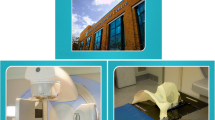Abstract
Here, we report the process for creating a patient visible quality educational display to highlight the collaborative quality working practices of Radiation Oncology clinicians and staff in the main Radiotherapy Centers throughout three Canadian provinces. These processes are often not visible to patients yet they speak directly to the standards of care delivered at these centers. The Canadian Partnership for Quality Radiotherapy (CPQR) Quality Assurance Guidelines for Canadian Radiation Treatment Programs guided this process. The display slides created were approved by the local Radiation Oncology departmental leadership for each participating medical center as well as patient focus groups and revised with feedback from both perspectives. Of 27 patients/families who evaluated the resulting educational patient display, 70% expressed high engagement in the information presented, and 81% felt the display will be of interest to patients receiving radiotherapy treatment. Patients/families surveyed reported that the displayed content made them feel more informed and more comfortable with their treatments. Survey data from this project indicates that increasing transparency and deepening patient education about the quality working practices behind radiotherapy treatments has the potential to empower patients receiving radiotherapy and increase their confidence in the care they are receiving.
Similar content being viewed by others
References
Rainey LC (1985) Effects of preparatory patient education for radiation oncology patients. Cancer 56:1056–1061
World Health Organization (1998) Therapeutic patient education. Continuing education programmes for health care providers in the field of prevention of chronic diseases. Report of a WHO working group. WHO Regional Office for Europe, Copenhagen
Rabbone I, De Vito B, Sacchetti C, Cerutti F (2005) Role of health care providers in educational training of patients with diabetes. Acta Biomed 76:63–65
González-Arriagada W, de Andrade M, Ramos L, Bezerra J, Santos-Silva A, Lopes M (2013) Evaluation of an educational video to improve the understanding of radiotherapy side effects in head and neck cancer patients. Support Care Cancer 21:2007–2015
Bibaultab JE, Pernet A, Mollo V, Gourdon L, Martin O, Giraud P (2016) Empowering patients for radiation therapy safety: Results of the EMPATHY study. Responsabilisation des patients dans la sécurité en radiothérapie: résultats de l’étude EMPATHY. Cancer Radiother 20:790–793
Williams K, Blencowe J, Ind M, Willis D (2017) Meeting radiation therapy patients informational needs through educational videos augmented by 3D visualisation software. J Med Radiat Sci 64:35–40
Canadian Partnership for Quality Radiotherapy, Patient Engagement Guidelines for Canadian Radiation Treatment Programs (2015) A Guidance Document on behalf of: Canadian Partnership for Quality Radiotherapy Quality Assurance Guidelines for Canadian Radiation Treatment Programs. QRT.2015.12.03 Accessed on January 22, 2018 from: http://www.cpqr.ca/wp-content/uploads/2013/09/QRT2015-12-03.pdf
International Association for Public Participation (2015) Patient participation Spectrum. Accessed online on January 22, 2018 from: http://iap2canada.ca/page-1020549
Fawzy FI, Fawzy NW, Canada AL (2001) Psychoeducational interventions for patients with cancer. In: Andersen BL, Baum A (eds) Psychosocial interventions for cancer. American Psychological Association, Washington (DC), pp 235–267
Acknowledgements
The team acknowledges the help and support of Laura Lynn, RTT, and Steeves Laura-Lynn, from Horizon Health Network, in New Brunswick for their help in the designing of the project.
Funding
This research did not receive any specific grant from funding agencies in the public, commercial, or not-for-profit sectors.
Author information
Authors and Affiliations
Corresponding author
Ethics declarations
Conflict of Interest
None.
Appendix
Appendix



















Rights and permissions
About this article
Cite this article
Moran, K., Sinclair, L., Freire, S. et al. Describing a Process for Creating a Patient Visible Quality Educational Display to Increase Patient Engagement in Radiation Oncology Throughout the Canadian Maritimes Provinces. J Canc Educ 34, 973–999 (2019). https://doi.org/10.1007/s13187-018-1402-0
Published:
Issue Date:
DOI: https://doi.org/10.1007/s13187-018-1402-0




